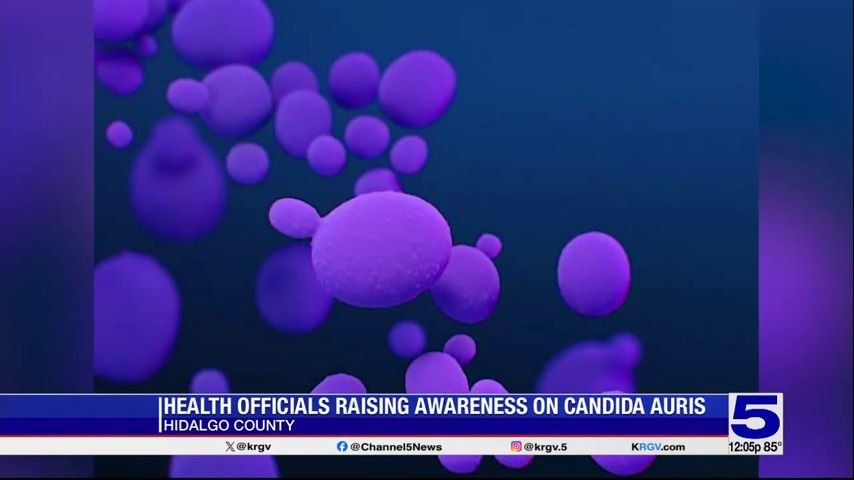Rising Concerns Over Candida Auris in the Rio Grande Valley: What You Need to Know
Health officials in the Rio Grande Valley are increasingly vigilant regarding the surge in cases of a potentially dangerous fungus known as Candida Auris. While it currently poses minimal risks to the general public, the threat it poses to vulnerable populations — particularly those in healthcare settings — is considerable.
Understanding Candida Auris
What is Candida Auris?
Candida Auris is an emerging fungal infection that is particularly concerning due to its resistance to multiple antifungal treatments. According to the U.S. Centers for Disease Control and Prevention (CDC), the fungus primarily occurs in healthcare environments, such as hospitals and nursing homes. Infected individuals may develop severe illnesses, especially if it enters the bloodstream or becomes invasive within the body.
The Current Situation in the Rio Grande Valley
In Hidalgo County, approximately 150 confirmed cases of Candida Auris have been reported this year alone. Meanwhile, Cameron County has recorded 40 cases, a noticeable increase from the total of 50 cases documented in the entirety of 2024. Health officials anticipate that these numbers may rise as the year progresses.
Impact on Health Facilities
While the fungus primarily affects critically ill individuals, healthy people are not entirely immune to contracting it. Dr. James Castillo, the Cameron County Health Authority, emphasizes, “This is really more of a threat to chronically ill people who are in a healthcare setting, but it’s still important to monitor it.” He further outlines that a significant percentage of patients infected with Candida Auris may not survive if it causes a bloodstream infection.
How Does Candida Auris Spread?
Environmental Persistence
Candida Auris can survive on various surfaces year-round, including hospital equipment and bed rails. Remarkably, it can even colonize human skin, making it a challenging adversary in healthcare settings.
Transmission Methods
The primary mode of transmission is via direct contact. This means that effective infection control measures are essential to limit the spread. Routine testing, typically involving blood cultures or skin swabs, can take several days to confirm a diagnosis.
Prevention and Response Strategies
When a healthcare facility identifies a positive case of Candida Auris, immediate protocols are enacted:
- Patient Isolation: Infected patients are isolated to prevent further spread.
- Surface Disinfection: Regular disinfecting of affected areas is crucial.
- Personal Protective Equipment (PPE): Staff and visitors are required to wear gowns, gloves, and masks.
Recognizing Symptoms of Candida Auris
Awareness of the symptoms associated with Candida Auris can be vital for timely intervention. Common signs include:
- Redness or Rash
- Itching or Irritation
- Swelling or Tenderness
- Pus or Drainage near Wounds or Medical Devices
- Persistent Fever and Chills that Don’t Improve with Antibiotics
- Unexplained Weakness or Fatigue
Tips for Hospital Visitors
For those visiting healthcare facilities, it is advisable to:
- Avoid direct contact with patients.
- Frequent handwashing is essential to minimize any risk of transmission.
Looking Forward
As health officials continue monitoring the situation regarding Candida Auris infections in the Rio Grande Valley, it remains imperative for the public to stay informed and vigilant. Though the current risk level may be low for the general public, those who rely on healthcare services must remain cautious.
To learn more about preventing fungal infections and the importance of hygiene in healthcare settings, check out resources from the CDC and the World Health Organization.
By maintaining awareness and adhering to recommended safety measures, we can collectively mitigate the impact of Candida Auris in our communities.


